
Platform: 3DS
Genre: First-Person Dungeon Crawler
Developer: Atlus
Publisher: Atlus (US), Deep Silver (EU)
Release Date: October 17, 2017 (US Digital+Physical, EU Digital); November 3, 2017 (EU Physical)
Demo Available: Yes (first 3 floors / adventurer level cap 10)
MSRP: $39.99 (US), $54.99 (CA), 39.99 (EU)
ESRB Rating: T (Fantasy Violence, Language, Suggestive Themes)
PEGI Rating: 12
Block Size: 4364
Text Languages: English
Audio Languages: English
Extra Links:
- Japanese Import OT
- US Website
- JP Website
- Skill Simulator (fansite)
- GAF Guildcard sheet
- EO Community Thread

- From Official Site.This is the story of Yggdrasil, the world tree in the land of Arcania.
Children of men pass down an ancient fable: The power of the gods will be granted there...
Disciples of magic study an archaic myth: The great mysteries shall be answered there...
Descendants of warriors recite their folklore: The ultimate techniques can be mastered there...
Nomads of the plains exchange a fairy tale: The lost treasures must be slumbering there...
From all across the land of Arcania, each culture pursues its own legends.
They journey to Yggdrasil, yearning to reach the top and meet their destinies.
This long-awaited fifth entry in the mainline Etrian Odyssey series takes us to the World Tree, Yggdrasil, once again. Like the rest of the mainline series, EOV seems to be light on the story, focusing instead on the exploration and gameplay and leaving your imagination to fill in the details.

While there are a few changes from previous games, the core gameplay is what you've come to expect from the series. Customize a party, go exploring, draw maps, get mauled by FOEs, you know, the usual. Things like buffs/debuffs/binds work the same as usual, as does the day/night cycle, town menus, difficulty mode, etc.
A few notable changes or advancements in this entry are noted below:
- Food Items - The Untold games introduced additional buffs by way of food and drinks while in town. EOV does not include this kind of system, however you have an additional inventory allowance for food items. These are HP/TP restorative items that you can gather and cook in the labyrinth and can consume outside of battle.
- Character Customization - Character creation is greatly enhanced compared to previous entries. In EOV you can adjust parts of the color pallet and even select a voice for battle/exploration dialog (not story dialog).
- Races - In EOV, you can select the race of your characters, which determines their portrait, stats, and racial skills.
- Character Stats - The stat curves/math/maximums are different in this game, with overall higher caps on stats, and stat growths are influenced by race.
- Adventure Episodes - Coming across mini-events in your exploration is something that all EO games have done, but EOV kicks this up a notch by adding more of these events, making them a bit more complex, having them grant experience points, and also having their outcomes influenced not just by your choices but also by the skills that the members of your party have.
- Chance Encounters - Expanding on the guild card idea, EOV allows you to randomly encounter the guilds you've exchanged cards with while you're exploring the dungeon and they may give you tips or items.
- "Super" Skills - EOV uses a Union Skill system where one or more characters consume their union gauge to do a special skill. Union Skills are RACE SPECIFIC and must be obtained by spending skill points!
- No Subclassing - Subclassing as we knew it from EOIII and IV is gone. Classes now choose a specialization ("Legendary Title") which determines what options the rest of their skill tree unlocks. These specializations will retain the core skillset of the class but can change the role and damage output of the class significantly.
- Temporary Party Slots - Additional things summoned into battle no longer take up place in your main party formation (such as how ninja clones worked in EOIII). There is now an additional front row (in front of your normal party front row) where summoned things will be in battle. The limit on temporary allies is 3. This is very important (see class section).
- Mapping - Not much different from previous entries, but be aware the the map icon pallet doesn't show all the icons by default and you can drag it around the mapping screen to expand it to see everything.

The four races of Arcania are the foundation of your party. Race selection determines several things.
- Stats - A character's stat growth is determined by their race, not just their class.
- Racial Skills - All characters have two sets of skills. Racial skills and class skills. Some skills are unique to certain races, or, if not unique, are unlocked at different levels depending on the race.
- Union Skills - Union skills are racial skills. This is important enough to get its own bullet point.
- Initial Class Selection - Each race has a set of preferred classes. These are the classes that a character of that race can pick from at character creation. A character can change class to ANY class fairly early in the game at the cost of 5 levels.
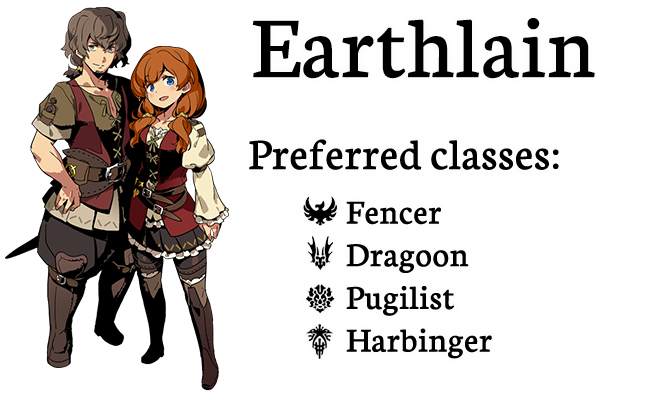

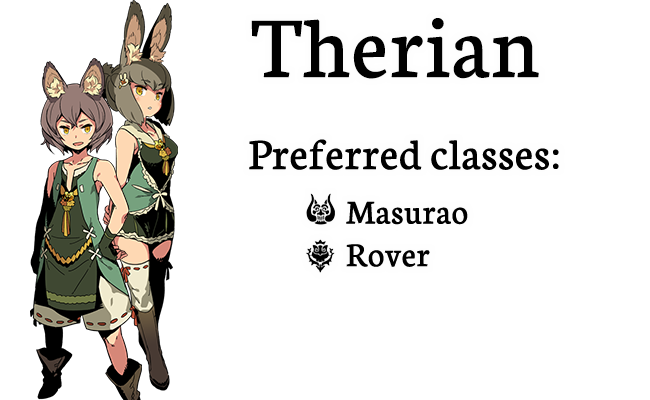

While default races can perform their class roles adequately overall, here are a few min-maxing tips:
- Therians have the highest STR and AGI, making them good not only at their two preferred classes, but also ideal as Fencers.
- Brouni have high TP and the highest VIT, making them great Dragoons.
- Earthlains and Celestrians have the highest LUK, making them good for ailment/binding roles, such as a Celestrian ailment-specalized botanist.

Ten classes are available to choose from. While some of them will look familiar, the way some series-signature skills/roles are distributed are, once again, shuffled around. Class selection determines several things.
- Portrait - A character's base portrait cannot be changed once it is created, even if you change class (however you can always re-visit the customization option to change hair/eye/accessory color and voice selection).
- Class Skills - The core set of class functionality comes from class skills.
- Equipment Selection - As with other EO games, equipment options are based on class.
One very important note about classes when you are considering your party build! Due to the limit of 3 temporary allies, one should take care when selecting a party with more than one of the following classes: Dragoon, Rover, and Necromancer. All three of these classes will compete for use of those three temporary ally slots. In particular, you may find Necromancer to be kind of useless if they cannot have access to all 3 of those slots. Rover can only use a maximum of 2, and Dragoon can use up to all 3 but can still function with just 1 or 2.
All classes start off with a very basic skill tree. Later in the game the rest of the skills will be unlocked, but you must chose between one of two specializations which will determine what the class will excel at. This skill simulator can help you review the options if you wish to plan ahead.
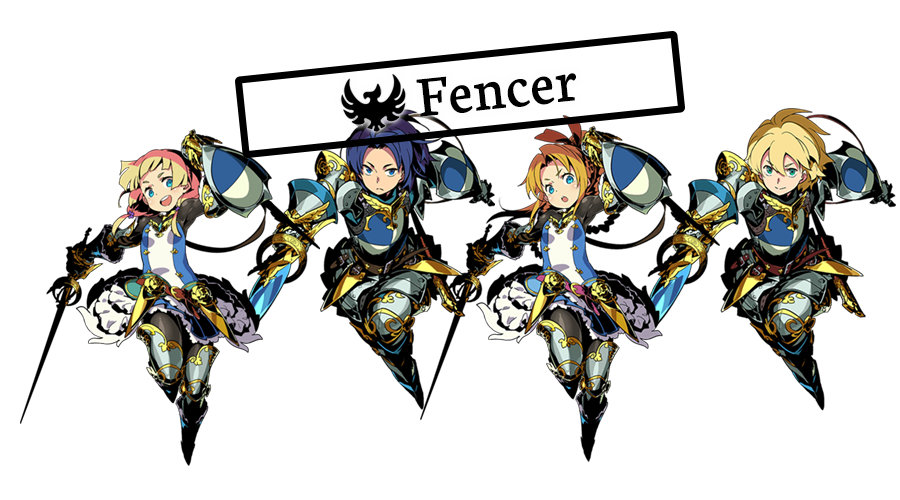
Fencer is a fast melee class. This class is most similar to the Buccaneer of EOIII, filling the role of elemental link/chaser damage (now called Chain) and minimal ailment options but without wearing the heavy armor of a Landshark. One important thing to note about Chain attacks is that Fencers can Chain on stab attacks in addition to damage of the elemenet matching the link skill they used, but bash or slash attacks will not cause the chain attacks to trigger.
- Phantom Duelist - This Legendary Title puts emphasis on the Fencer as an evasion tank who can deal damage with counter-attacks. Boost your speed and evasion to insane heights, especially if you tank naked!
- Chain Duelist - This Legendary Title specs the Fencer as an offense-oriented elemental damage dealer instead of a tank. Chain attacks hit harder and more often.
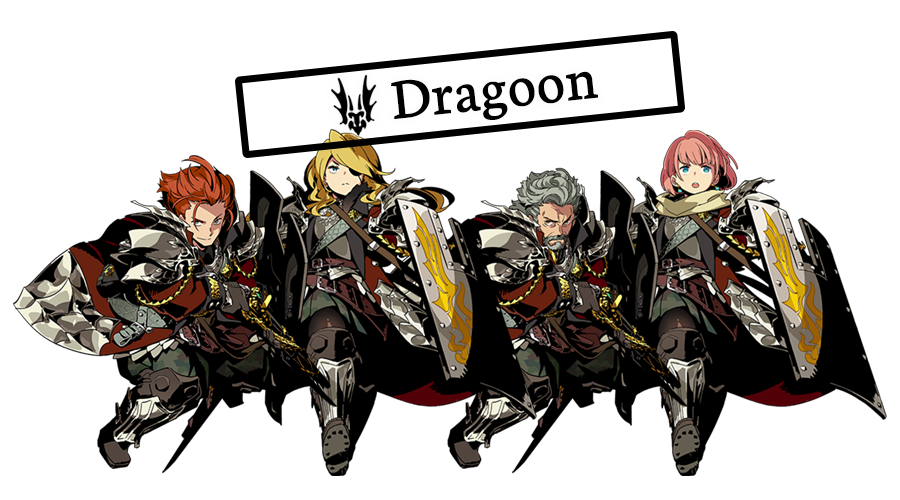
Dragoon is a new spin on the familar tank class. They use guns... to tank... from the back row! They also can create (summon) Bunkers, which are temporary allies that last the duration of the battle. Bunkers have a higher hostility than your normal party members under normal circumstances with which to draw enemy attacks. A dragoon can summon up to 3 bunkers in battle. Attacks that may be fatal to your party members might be absorbed by the bunker, leaving your party unscathed!
- Shield Bearer - This title focuses on full defense, party protection, and enemy debilitation.
- Cannon Bearer - Emphasises the use of the dragoon's gun without losing access to their core tank skills, such as Line Guard and Bunker.
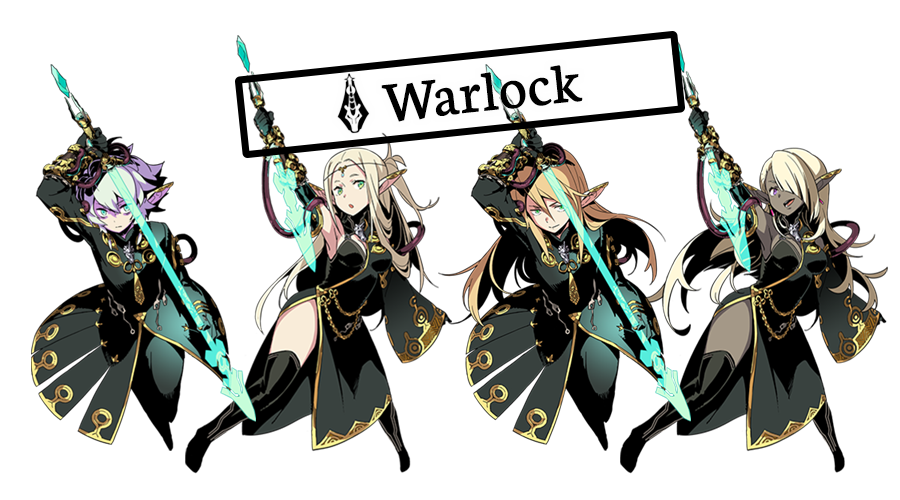
Warlock fills the role of primary elemental damage spellcaster.
- Omnimancers - Learn a wider variety of spells, being able to learn spells with physical damage properties like cut/bash/stab.
- Elemancer - With this Title the warlock takes the more traditional path of specializing by mastering big damage with fire/ice/volt spells.
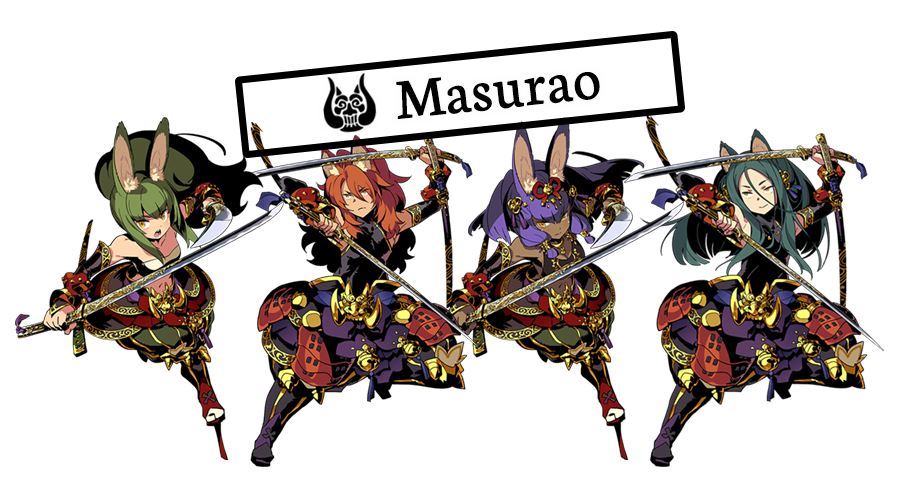
Masurao is a melee class built for high damage but offering little utility. For those cringing at the thought of stance management like we saw with Ronin classes in the past, that complication is not present in the Masurao's design.
- Blade Dancer - Dual-wielding is for chumps. Real bunnygirls wield 4 katana at once without wearing armor. This specialization excels at dealing with packs of multiple enemies.
- Blade Master - This Legendary Title focuses on wielding just one weapon and dealing better single-target damage and also has access to elemental and binding attacks.

Pugilist looks like a monk, but isn't really a monk in EOIII terms. Pugilist in EOV is actually more like a Dark Hunter; they are the premier binding class that can deal respectable damage.
- Barrage Brawler - This spec focuses on binds and more binds and then dealing high damage to things that are bound.
- Impact Brawler - A riskier playstyle with high damage potential, this Title retains the core binding skills but puts an emphasis on just dealing damage with a roller coaster ride of self-inflicted HP loss.
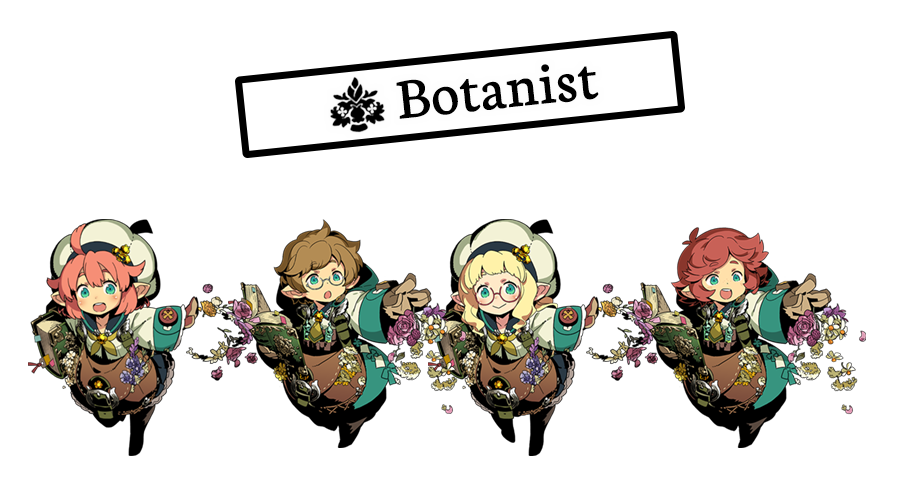
Botanist is the primary healer of EOV. Like the Medic class of previous games, they can also inflict ailments like Poison.
- Merciful Healer - This Title expands and enhances the Botanist's healing kit for a lavish array of party support.
- Graced Poisoner - Without losing their core healing skills, this flavor of Botanist focuses on throwing a larger selection of nasty stats ailments at the enemy.
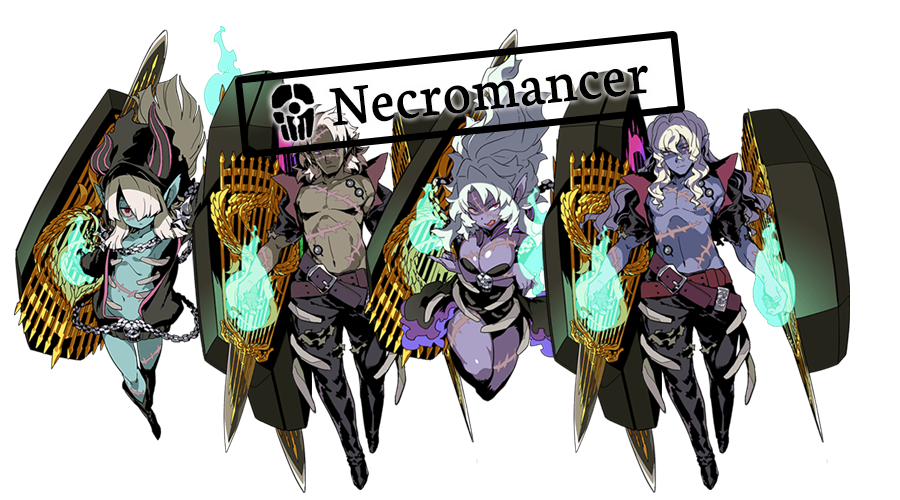
Necromancer is a summoner class that starts out functioning best as a tank class by using wraiths to take hits for the party, but at higher levels can also be used as a damage dealer once they have a larger TP pool to work with and enough skill points to unlock some later skills. Unlike the Dragoon or Rover which can get away with just using one or two of the three "summon" slots the party has, a Necromancer really wants to be able to use all three.
- Spirit Evoker - This Title is a good pick for using a Necro as a tank and support class, as it places an emphesis on party support while gaining a lot of utility via wraiths, such as elemental damage and status ailment options, and even full-party revive (besides the Necromancer, who must still be alive to use the skill).
- Spirit Broker - Focuses instead on bigger damage nukes and dealing damage by sacrificing wraiths.
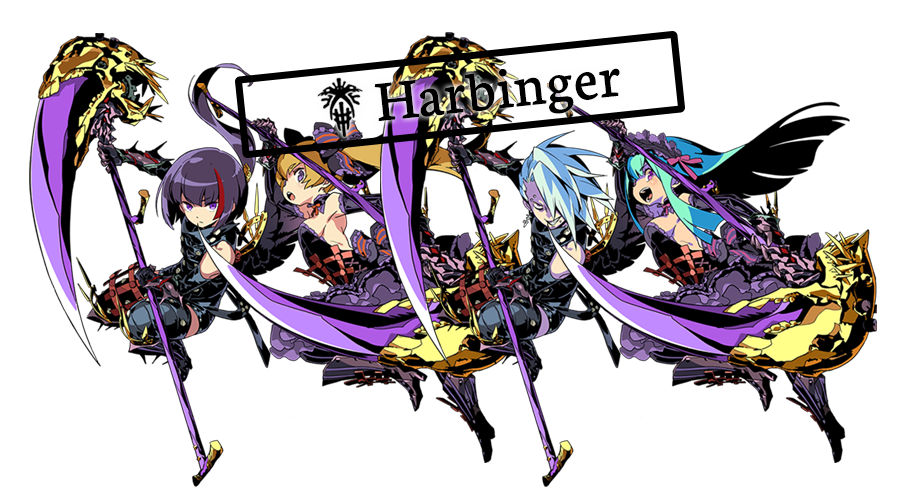
Harbinger is an ailment-oriented melee class, not all that dissimilar to the Nightseekers of EOIV. Harbinger is a "stance" class meaning that it needs to be in its Miasma Armor mode to have its full potential.
- Deathbringer - This Title enhances the Harbinger's damage and ailment output, gaining both offensive and defensive power in longer battles as more ailments can be applied.
- Deathguard - Instead of a focus on big damage, the Deathguard is an ailment support master, enfeebling enemies and preventing or curing ailments and/or binds applied to the party while still retaining the core Harbinger Miasma Armor skill set and some respectable damage skills.

Rover behaves similarily to other bow classes in the series, except they are also a summon class able to summon up to two pets (hawk and dog) who will sit in the temporary ally front row. Early game, Rover is more of a support class and can't do that much damage. Later in the game, they can gain access to some powerful ranged skills. As a source of constant Stab damage, Rovers get along well with Fencers for Chain attacks. Note that while you can summon both pets at once, you will have to chose one or the other for specialization.
- Flying Falcon - Hawk mastery brings with it skills with high damage multipliers (Sky Dive) and hit count (Million Arrows).
- Hunting Hound - Doggy helps bind enemies and heals your team.
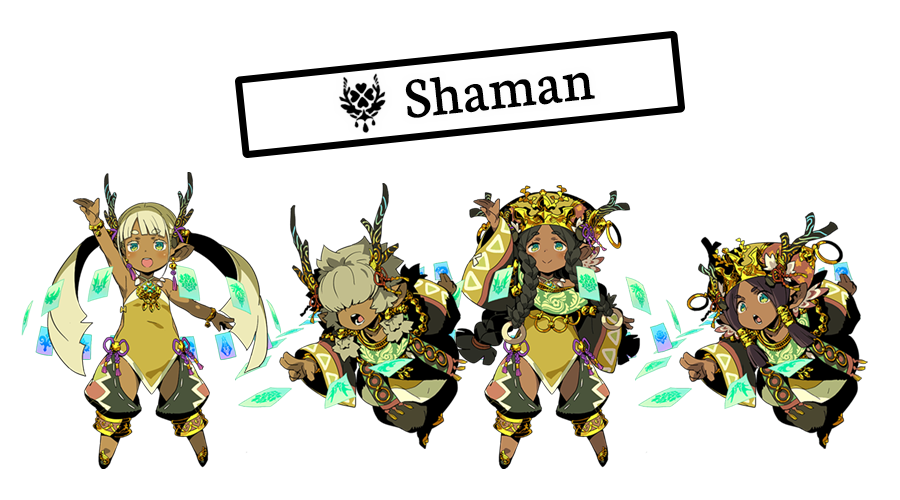
Shaman, last but not least, is most like Troubador or Princess in the style of buffing and healing they employ. As a support class, they can heal, but like their predecessors, there is some setup required, so you may want some supplemental/additional healing for your team if you use a Shaman as your primary support/healer.
- Divine Punisher - This Title is a bit more oriented towards being able to do damage, but they also have an Oracle skill that lets your whole party absorb damage of a certain element. If past games are anything to go by, this could be a pretty big deal, because the Dragoon does not have the element-nullifying skills that Protectors are known for.
- Divine Herald - The Shaman adds a variety of additional buffing and HP recovery skills to their core buffing skillset.

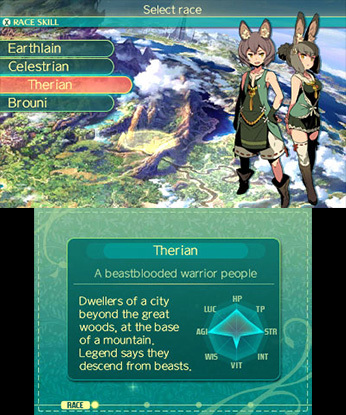
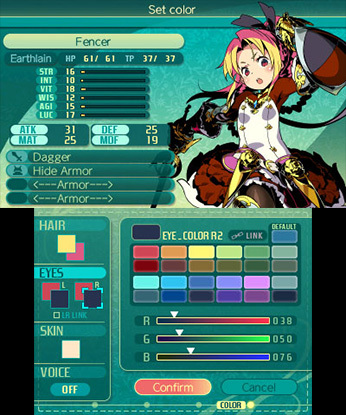

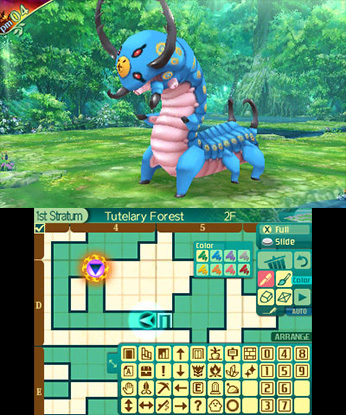

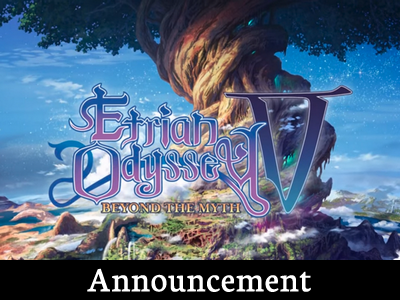
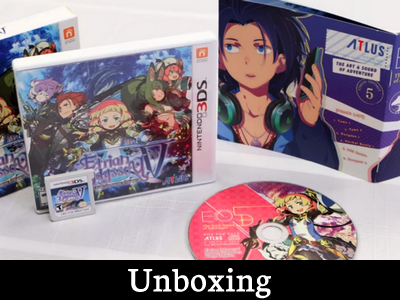
(These videos are in Japanese because there was no English version)
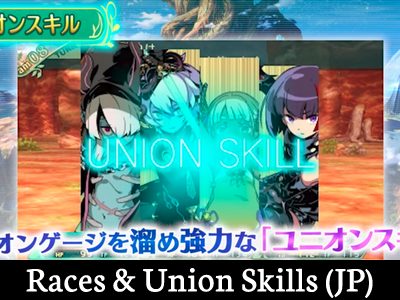
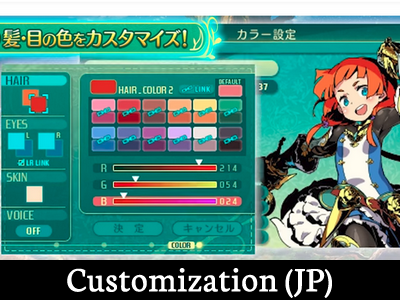

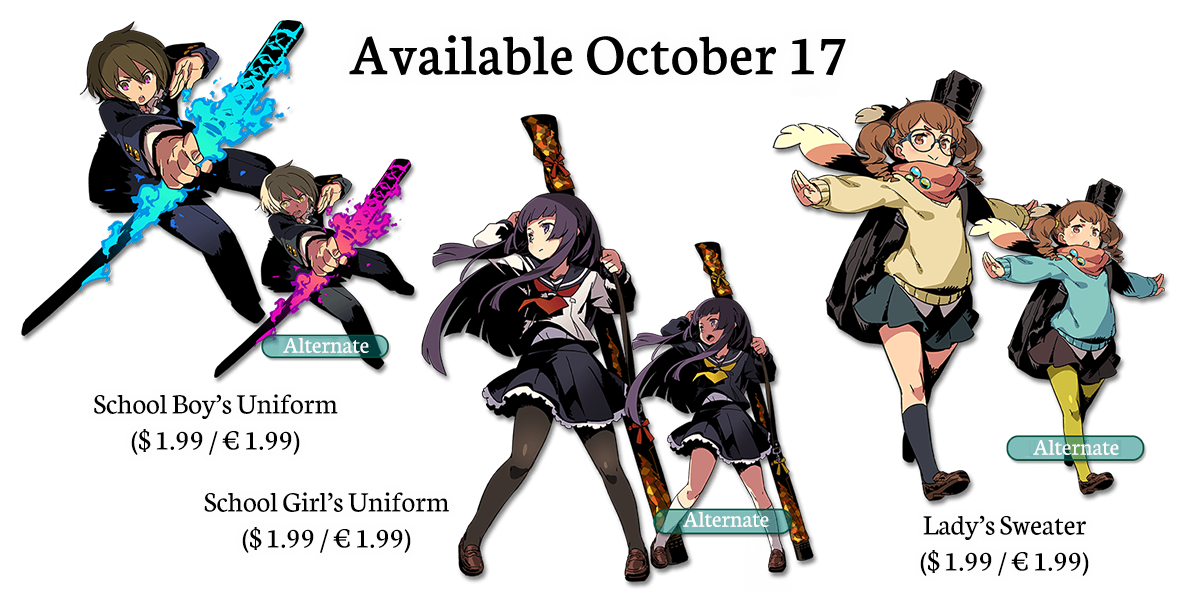

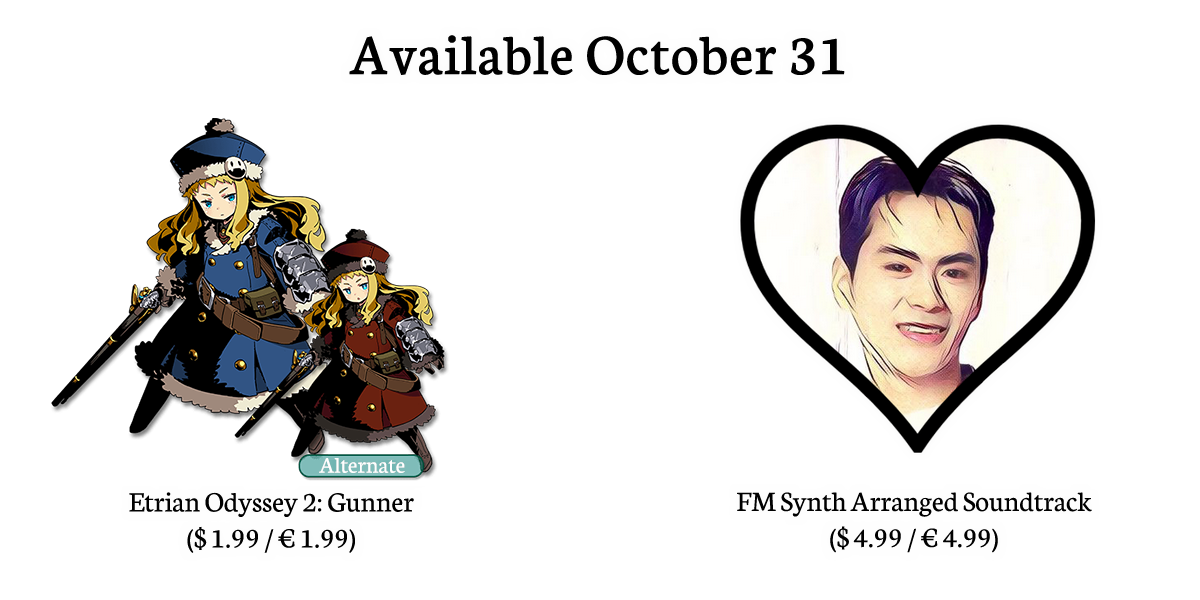
- These are cosmetic character portraits, not full Classes like we saw in Untold.
- Wizardly Experience Quest adds a new repeatable quest and accessory that grants triple experience points.
- Wizardly Fortune Quest adds a new repeatable quest and accessory that boosts enemy drop rates to 100%.
- Unlike Untold 1 and 2 which included both music options, FM Synth tracks for EOV will only be available as DLC.

RPG Site.net Review
God is a Geek Review
Vice.com Waypoint article on difficulty and EO games as puzzle games
(As they become available)

Q. Are there any pre-order or first-print bonuses for this game?
A. All first-print copies of the game come with a 24-page art book and a CD containing 6 arranged tracks, all contained in a cardboard box. In a first, the European version of the game also comes with a launch edition, but it contains only the art book.
US Version:
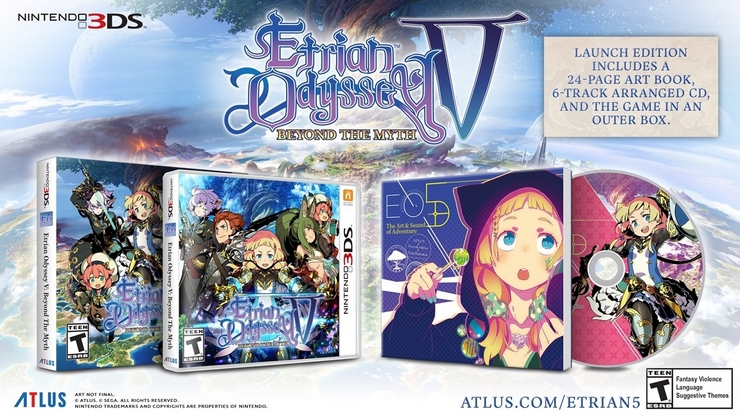
EU Version:

Q. Can you name the Rover's pets?
A. Yes, you can! You're free to name them in the Explorers Guild.
Q. Can you summon outside of battle?
A. Necromancers and Rovers are able to call up their wraiths/pets during exploration, which helps greatly for preparation. In addition, the Necromancers' and Rovers' summons remain after battle.
Q. Can you switch out a character's portrait?
A. The only way to change a character's portrait entirely is to either retire them. You're free to make coloration and voice changes however.
Q. Does this game support StreetPass?
A. This game features Guild Cards similar to what the other 3DS Etrian games have had. You can also share Guild Cards through QR codes.
Q. What are Chance Encounters?
A. After obtaining a Guild Card from another party (including other players), you may run into their characters during your exploration. These encounters allow you to gain some tips, food, or special items.
Q. What is the Memory Conch?
A. It's an equippable accessory that, once equipped on an active member, allows the guild members that have been left in the town to gain a portion of the EXP gained during battle. (This won't diminish the EXP gained by your active members.)
Q. I'm unsure about this game. I'm curious, but I've never tried a game in this series.
A. A free demo is available to download from the eShop. It allows you to reach up to the 3rd Floor and to level your party up to level 10. Should you be interested in playing the full game afterwards, the save from the demo is entirely transferrable to both the physical and digital versions.
Q. Do I really need to draw my map?
A. Try sticking with it for two-three floors, but if you really don't like it, there are some fairly robust auto-mapping features in the options menu.
Q. Do I need to have played previous games in the series to understand this game's story?
A. Nope. As always with the series, the story's entirely self-contained. Knock yourself out with this one.
Q. This is the series that was crossed over with Persona in Persona Q, right?
A. Yup. Though a lot of the general gameplay is the same between this game and Q, Persona Q was still generally structured like a Persona game to avoid alienating its fanbase. There's none of that same structure here.
Q. What are the difficulty settings? Is there anything locked behind difficulties?
A. Basic increases the damage dealt to enemies by 20%, decreases the damage taken by your party by 20%, and increases your EXP gains by 20%. Advanced is considered the normal mode. There's nothing locked behind the difficulties beyond your desire for challenge. You can change the difficulty during the game.

Atlus/Atlus USA for core art assets
and for finally releasing the game for us
Nachos and especially Zweizer for OT artwork and some basic game info.

If you've never stopped by before, come check out the Community Thread for general purpose EO chat.
